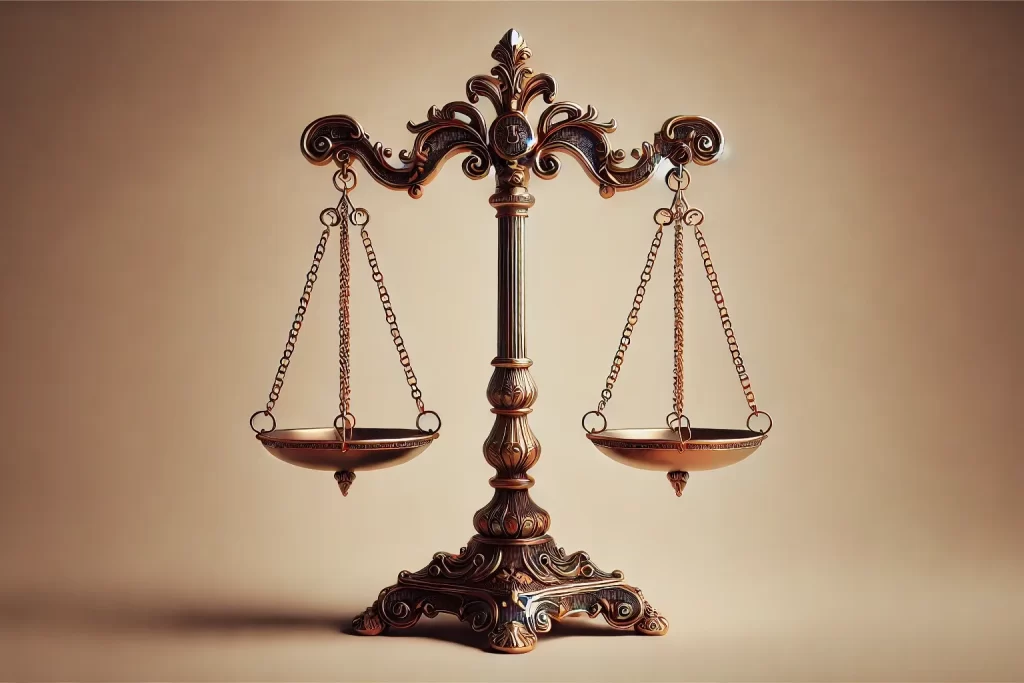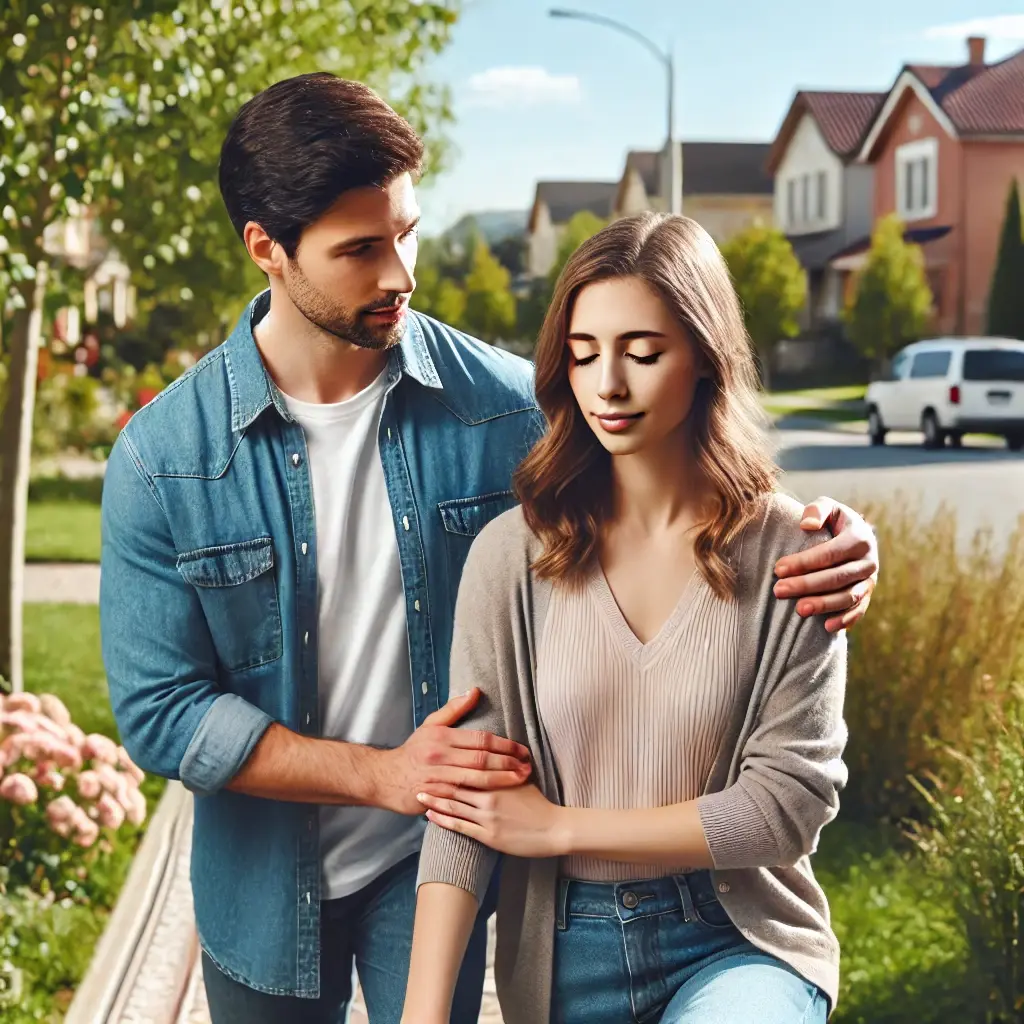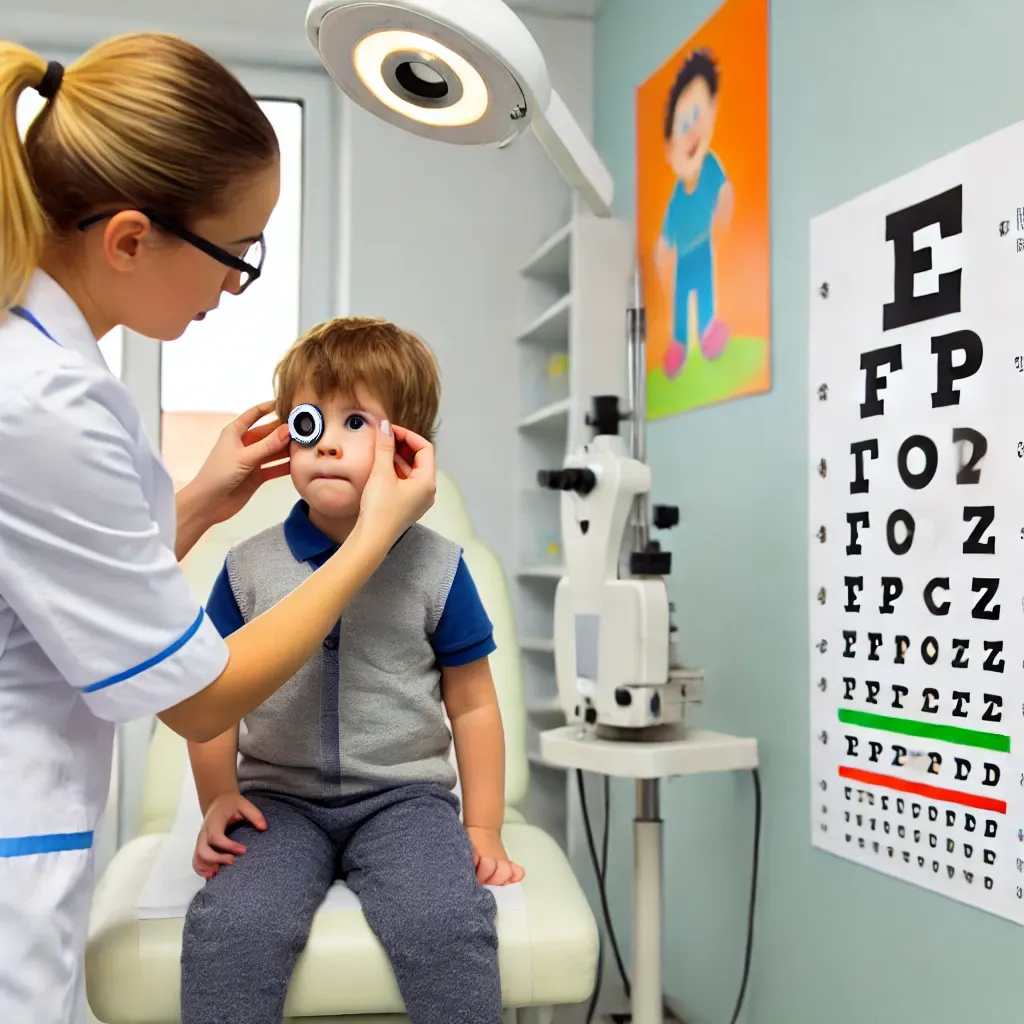
Low vision affects millions of people worldwide, presenting significant challenges in daily living. For a detailed understanding of low vision, including its causes, symptoms, and treatments, please visit Zoomax’s comprehensive guide.
This article focuses on the legal protections and advocacy efforts that support individuals with low vision, ensuring they have access to the resources and opportunities needed to lead fulfilling lives.
Legal Rights and Protections for People with Low Vision
Understanding and utilizing legal protections is vital for people with low vision to ensure their rights are upheld and they can access necessary resources and opportunities. Here are some key legal frameworks in place:
1. Americans with Disabilities Act (ADA)
Overview: The ADA prohibits discrimination against individuals with disabilities, including those with low vision, in all areas of public life (U.S. Department of Justice, 2023).
Key Provisions:
- Title I: Requires employers to provide reasonable accommodations for employees with low vision, ensuring equal employment opportunities.
- Handling Discrimination: If an employer fails to provide reasonable accommodations or discriminates against an employee with low vision, the individual can file a complaint with the Equal Employment Opportunity Commission (EEOC). Compensation may include back pay, reinstatement, and damages for emotional distress, which can range from $5,000 to $300,000 depending on the severity and impact of the discrimination (EEOC, 2023).
- Title II: Mandates that public services and transportation are accessible to individuals with low vision, promoting inclusion and independence.
- Handling Discrimination: If a public entity fails to comply, individuals can file complaints with the U.S. Department of Justice. Remedies may include policy changes and compensatory damages, typically ranging from $1,000 to $50,000, for any inconvenience or discrimination experienced (U.S. Department of Justice, 2023).
- Title III: Ensures public accommodations such as restaurants, hotels, and theaters are accessible, including provisions for visual aids and accessible formats.
- Handling Discrimination: Complaints can be filed with the Department of Justice if public accommodations are inaccessible. Potential outcomes include injunctive relief to enforce compliance and compensation for affected individuals, which may range from $1,000 to $50,000 (U.S. Department of Justice, 2023).
- Title I: Requires employers to provide reasonable accommodations for employees with low vision, ensuring equal employment opportunities.
2. Rehabilitation Act of 1973
Overview: This Act prohibits discrimination on the basis of disability in federal programs and services (U.S. Department of Health & Human Services, 2024).
Key Provisions:
- Section 501: Mandates affirmative action and nondiscrimination in federal employment, ensuring job opportunities for people with low vision.
- Handling Discrimination: Federal employees can file complaints with their agency’s Equal Employment Opportunity Office. Remedies may include job reinstatement, back pay, and damages for discrimination, with compensation potentially ranging from $5,000 to $300,000 (EEOC, 2023).
- Section 504: Prohibits discrimination in any program receiving federal financial assistance, including education and healthcare, ensuring accommodations for those with low vision.
- Handling Discrimination: Complaints can be filed with the Office for Civil Rights (OCR) for violations. Outcomes may include policy changes and compensatory damages for denied services, typically ranging from $1,000 to $50,000 (U.S. Department of Education, 2024).
- Section 508: Requires federal electronic and information technology to be accessible to individuals with disabilities, including adaptations for low vision users.
- Handling Discrimination: If technology is not accessible, individuals can file complaints with the appropriate federal agency. Remediation often involves improving accessibility and compensating for access denial, with potential damages ranging from $1,000 to $50,000 (U.S. General Services Administration, 2024).
- Section 501: Mandates affirmative action and nondiscrimination in federal employment, ensuring job opportunities for people with low vision.
3. Individuals with Disabilities Education Act (IDEA)

Overview: IDEA ensures that children with disabilities, including low vision, receive a free appropriate public education tailored to their needs (U.S. Department of Education, 2024).
Key Provisions:
Individualized Education Program (IEP): Each child with low vision receives an IEP, which outlines specific accommodations and services to support their educational development.
Least Restrictive Environment (LRE): Advocates for the integration of students with low vision into mainstream classrooms with appropriate support and resources.
Parental Participation: Ensures parents are involved in planning their child’s education and accommodations.
- Handling Discrimination: Parents can file complaints with their state’s education agency if a school fails to meet IDEA requirements. Compensation may include additional educational services and monetary damages for lost educational opportunities, which could range from $1,000 to $50,000 (U.S. Department of Education, 2024).
4. Fair Housing Act
 Overview: The Fair Housing Act prohibits discrimination in housing based on disability, including low vision (U.S. Department of Housing and Urban Development, 2024).
Overview: The Fair Housing Act prohibits discrimination in housing based on disability, including low vision (U.S. Department of Housing and Urban Development, 2024).Key Provisions:
Reasonable Modifications: Allows individuals with low vision to make necessary modifications to their living environments to improve accessibility.
Reasonable Accommodations: Requires housing providers to make accommodations in policies and practices to ensure equal access for individuals with low vision.
- Handling Discrimination: Complaints can be filed with the Department of Housing and Urban Development (HUD). Remedies may include changes in housing policies, financial compensation for emotional distress, and legal fees. Compensation can range from $5,000 to $100,000, depending on the case severity (U.S. Department of Housing and Urban Development, 2024).
5. Air Carrier Access Act (ACAA)

Overview: The ACAA prohibits discrimination in air travel against individuals with disabilities, including those with low vision (U.S. Department of Transportation, 2023).
Key Provisions:
Nondiscrimination: Ensures fair treatment of passengers with low vision, prohibiting airlines from denying access or services.
Assistance: Requires airlines to provide assistance, such as boarding help and accessible information, to passengers with low vision.
- Handling Discrimination: Passengers can file complaints with the U.S. Department of Transportation’s Aviation Consumer Protection Division. Compensation may include refunds, reimbursement of expenses, and corrective measures by the airline, with possible financial compensation ranging from $1,000 to $25,000 (U.S. Department of Transportation, 2023).
Advocacy for People with Low Vision

Advocacy plays a crucial role in improving the quality of life for individuals with low vision by promoting accessibility, inclusivity, and equal opportunities. Several organizations are dedicated to this cause, providing essential services and support:
Key Organizations Advocating for People with Low Vision
American Foundation for the Blind (AFB)
- Support for Low Vision: AFB enhances the quality of life for people with low vision through research, education, and advocacy. They provide resources for transitioning to employment or higher education and work on public policy initiatives to increase access to accessible technology and educational materials (AFB, 2023).
- Website: American Foundation for the Blind
National Federation of the Blind (NFB)
- Support for Low Vision: NFB offers services like the NFB-NEWSLINE, which provides access to newspapers and magazines in audio format. They advocate for legislative changes to ensure educational and employment opportunities are accessible to those with low vision (NFB, 2024).
- Website: National Federation of the Blind
Lighthouse Guild
- Support for Low Vision: Lighthouse Guild offers personalized vision rehabilitation programs that help individuals maximize their remaining sight and maintain independence. Their programs include adaptive technology training and psychological support (Lighthouse Guild, 2024).
- Website: Lighthouse Guild
American Council of the Blind (ACB)
- Support for Low Vision: ACB provides resources, including educational scholarships and peer support networks, to enhance independence and integration of individuals with low vision in society (ACB, 2023).
- Website: American Council of the Blind
VisionServe Alliance
- Support for Low Vision: VisionServe Alliance connects leaders from various organizations that support low vision services, facilitating the exchange of best practices and innovations in vision rehabilitation (VisionServe Alliance, 2023).
- Website: VisionServe Alliance
Hadley Institute for the Blind and Visually Impaired
- Support for Low Vision: Hadley provides free distance learning courses focused on daily living skills, technology, and professional development. They also offer discussion groups where participants share experiences and strategies for living independently (Hadley, 2024).
- Website: Hadley Institute
Perkins School for the Blind
- Support for Low Vision: Perkins offers educational services and resources for children and adults with low vision. Their eLearning programs provide training for educators and parents, ensuring students with low vision receive appropriate accommodations and support (Perkins School for the Blind, 2023).
- Website: Perkins School for the Blind
American Printing House for the Blind (APH)
- Support for Low Vision: APH develops and distributes educational materials for students with low vision, including large print textbooks and tactile learning tools to enhance learning experiences and accessibility (APH, 2024).
- Website: American Printing House for the Blind
Foundation Fighting Blindness
- Support for Low Vision: This organization funds research leading to treatments and cures for retinal degenerative diseases. They also provide educational resources and community events to raise awareness and support those affected (Foundation Fighting Blindness, 2023).
- Website: Foundation Fighting Blindness
Blinded Veterans Association (BVA)
- Support for Low Vision: BVA provides support and advocacy for blinded veterans, including peer mentoring, rehabilitation resources, and legislative advocacy to ensure veterans receive necessary benefits and services (Blinded Veterans Association, 2024).
- Website: Blinded Veterans Association
Conclusion
Legal protections and advocacy are essential for empowering people with low vision and ensuring they have equal opportunities and access to resources. By understanding and leveraging these rights and the support available from dedicated organizations, individuals with low vision can lead more independent and fulfilling lives.
Call to Action
We encourage everyone to support these advocacy efforts and raise awareness about the challenges faced by individuals with low vision. By promoting inclusivity and accessibility, we can make a significant impact in improving the quality of life for those affected by low vision.
FAQ
1. What steps can low vision individuals take if they experience workplace discrimination?
Answer:
If a low vision individual faces workplace discrimination, they should start by documenting the incidents thoroughly, ensuring all relevant details are noted. Next, they should formally request accommodations, like adaptive technologies or adjusted work settings, from their employer. If the discrimination persists, filing a complaint with the EEOC is recommended. Legal consultation may also be beneficial to explore further options for compensation or remediation.
2. How does the Individuals with Disabilities Education Act (IDEA) support students with low vision?
Answer:
IDEA provides comprehensive support for students with low vision through personalized education plans. The Individualized Education Program (IEP) is central to this support, offering tailored educational goals and accommodations. Parents are encouraged to participate in planning, ensuring that the least restrictive environment is maintained for their child’s learning. This approach promotes inclusivity and maximizes educational potential for low vision students.
3. What resources are available for low vision individuals seeking legal protection and advocacy?
Answer:
Low vision individuals can access various resources from organizations like the American Foundation for the Blind (AFB), which offers employment and accessibility support, and the National Federation of the Blind (NFB), known for its advocacy and information services like NFB-NEWSLINE. Additionally, the Lighthouse Guild provides vision rehabilitation, while the American Council of the Blind (ACB) offers peer networks and scholarships, and Hadley Institute provides free educational courses for independence.
References
Organizations and Resources
- American Foundation for the Blind. (2023). CareerConnect. Retrieved from https://www.afb.org/programs-and-services/careerconnect
- American Printing House for the Blind. (2024). Educational Products. Retrieved from https://www.aph.org/products/
- Blinded Veterans Association. (2024). Operation Peer Support Program. Retrieved from https://bva.org/programs/operation-peer-support/
- Foundation Fighting Blindness. (2023). Research and Awareness. Retrieved from https://www.fightingblindness.org/research
- Hadley Institute for the Blind and Visually Impaired. (2024). Distance Learning Courses. Retrieved from https://hadley.edu/discussions/
- Lighthouse Guild. (2024). Vision Rehabilitation Services. Retrieved from https://www.lighthouseguild.org/services/vision-rehabilitation/
- National Federation of the Blind. (2024). NFB-NEWSLINE. Retrieved from https://www.nfb.org/programs-services/nfb-newsline
- Perkins School for the Blind. (2023). Perkins eLearning. Retrieved from https://www.perkinselearning.org/
- VisionServe Alliance. (2023). VisionServe Alliance Resources. Retrieved from https://visionservealliance.org/resources/
- American Council of the Blind. (2023). Programs and Services. Retrieved from https://www.acb.org/programs-services
Laws and Regulations
- U.S. Department of Justice. (2023). Americans with Disabilities Act of 1990. Retrieved from https://www.ada.gov/
- U.S. Department of Health & Human Services. (2024). Rehabilitation Act of 1973. Retrieved from https://www.hhs.gov/civil-rights/for-individuals/special-topics/ada/index.html
- U.S. Department of Education. (2024). Individuals with Disabilities Education Act (IDEA). Retrieved from https://sites.ed.gov/idea/
- U.S. Department of Housing and Urban Development. (2024). Fair Housing Act. Retrieved from https://www.hud.gov/program_offices/fair_housing_equal_opp/fair_housing_act_overview
- U.S. Department of Transportation. (2023). Air Carrier Access Act (ACAA). Retrieved from https://www.transportation.gov/individuals/aviation-consumer-protection/air-carrier-access-act-1986
- U.S. General Services Administration. (2024). Section 508 of the Rehabilitation Act. Retrieved from https://www.section508.gov/


I do believe all the ideas youve presented for your post They are really convincing and will certainly work Nonetheless the posts are too short for novices May just you please lengthen them a little from subsequent time Thanks for the post
Thank you very much for your suggestions. We will take them into consideration and strive to make our content more complete in future posts! You can also leave a comment and let us know what you would like to know about, and we will help you search for and publish that content as new posts.